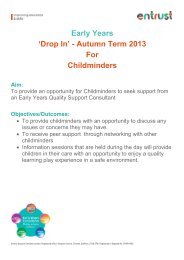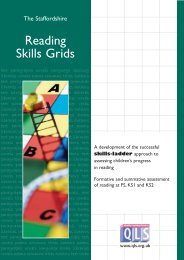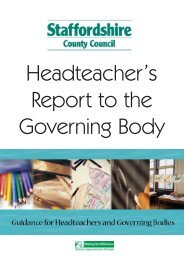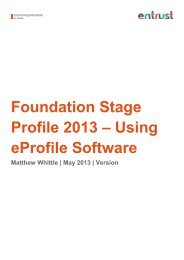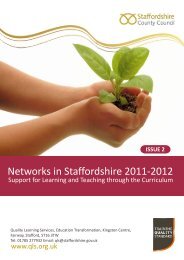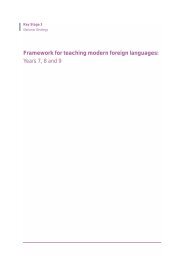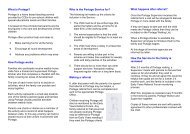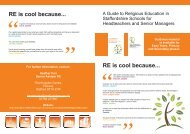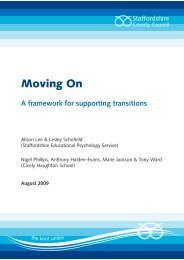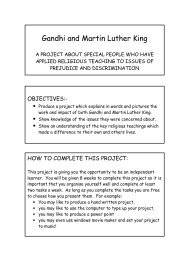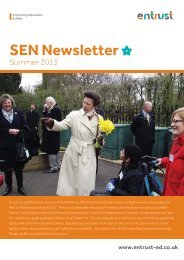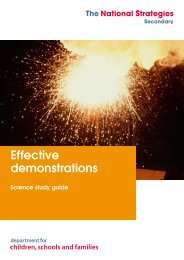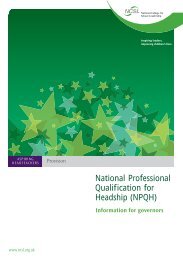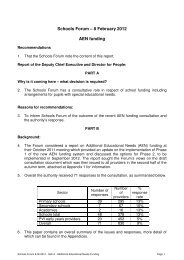CLLD Phonics at Key Stage 2 - School-Portal.co.uk
CLLD Phonics at Key Stage 2 - School-Portal.co.uk
CLLD Phonics at Key Stage 2 - School-Portal.co.uk
You also want an ePaper? Increase the reach of your titles
YUMPU automatically turns print PDFs into web optimized ePapers that Google loves.
1 of 35 The N<strong>at</strong>ional Str<strong>at</strong>egies ⏐ Primary<br />
<strong>CLLD</strong> <strong>Phonics</strong> <strong>at</strong> <strong>Key</strong> <strong>Stage</strong> 2<br />
<strong>CLLD</strong> <strong>Phonics</strong> <strong>at</strong><br />
<strong>Key</strong> <strong>Stage</strong> 2<br />
Introduction<br />
Some children <strong>at</strong> <strong>Key</strong> <strong>Stage</strong> 2 may be experiencing difficulty in reading and/or writing because<br />
they have missed or misunderstood a crucial phase of system<strong>at</strong>ic phonics teaching.<br />
In their day-to-day learning some children may:<br />
• experience difficulties with blending for reading and segmenting for spelling<br />
• show <strong>co</strong>nfusion with certain graphemes and rel<strong>at</strong>ed phonemes<br />
• have difficulty segmenting longer words <strong>co</strong>ntaining adjacent <strong>co</strong>nsonants<br />
• demonstr<strong>at</strong>e a general insecurity with long vowel phonemes. For example, children generally<br />
know the most <strong>co</strong>mmon represent<strong>at</strong>ion of a phoneme, for example /ai/ as in train, but require<br />
more explan<strong>at</strong>ion and practice about the altern<strong>at</strong>ive spellings for any particular phoneme.<br />
These m<strong>at</strong>erials are designed to guide teachers, and suitably trained teaching assistants (TAs), in<br />
supporting children who may have poorly developed phonic knowledge, skills and understanding.<br />
For some children, the missing piece of the jigsaw may be specific items of knowledge th<strong>at</strong><br />
require only a few weeks of short, focused sessions. However, other children may not have<br />
crucial <strong>co</strong>ncepts such as blending and segmenting in place. Some may have a <strong>co</strong>mbin<strong>at</strong>ion of the<br />
two and will require a term or more of <strong>co</strong>nsolid<strong>at</strong>ion. It is crucial, therefore, th<strong>at</strong> the children’s<br />
current knowledge is accur<strong>at</strong>ely assessed and the gaps identified so th<strong>at</strong> support can be precisely<br />
targeted.<br />
In each unit there are a number of suggested activities for each stage of the teaching sequence.<br />
These are intended as examples: teachers and TAs will readily be able to supply altern<strong>at</strong>ives,<br />
selecting and devising activities which are most appropri<strong>at</strong>e to the needs of the children. These<br />
m<strong>at</strong>erials do not <strong>co</strong>nstitute a full programme, but are designed to be able to be adapted and used<br />
as necessary, based on the system<strong>at</strong>ic phonics programme in use in the school and the identified<br />
needs of the children. The ultim<strong>at</strong>e aim of these m<strong>at</strong>erials, as with all intervention str<strong>at</strong>egies, is to<br />
help children to be<strong>co</strong>me fluent, <strong>co</strong>nfident readers and writers as soon as possible.<br />
These m<strong>at</strong>erials are based on Letters and Sounds: Principles and Practice of High Quality<br />
<strong>Phonics</strong> (Ref: 00281-2007FLR-EN) which can be accessed online <strong>at</strong><br />
www.standards.dcsf.gov.<strong>uk</strong>/n<strong>at</strong>ionalstr<strong>at</strong>egies. However, the principles and the approach<br />
<strong>co</strong>uld be adapted to any high-quality system<strong>at</strong>ic phonics programme.<br />
The process<br />
Step 1<br />
Assess current knowledge from a bank of assessment m<strong>at</strong>erials (see<br />
Appendix 1)<br />
• Grapheme–phoneme <strong>co</strong>rrespondence<br />
• Non-word reading task<br />
01058-2009DOC-EN-01 © Crown <strong>co</strong>pyright 2009
2 of 35 The N<strong>at</strong>ional Str<strong>at</strong>egies ⏐ Primary<br />
<strong>CLLD</strong> <strong>Phonics</strong> <strong>at</strong> <strong>Key</strong> <strong>Stage</strong> 2<br />
• Oral segment<strong>at</strong>ion (for spelling)<br />
• Oral blending (for reading)<br />
• Dict<strong>at</strong>ion and analysis of writing<br />
• Knowledge of high-frequency words, including ‘tricky’ words<br />
Step 2<br />
Identify the need and select the appropri<strong>at</strong>e unit<br />
The units are linked to the phases in Letters and Sounds, beginning <strong>at</strong> Unit 2. Phase 1 uses<br />
aural/oral games and activities to develop phonological awareness. If there are children who have<br />
difficulties with oral blending and segmenting, refer to Letters and Sounds Phase 1, Aspect 7 for a<br />
range of activities.<br />
An overview of the units<br />
Unit 2 linked to Phase 2 Letters and Sounds<br />
Grapheme–phoneme <strong>co</strong>rrespondences (GPCs), blending and segmenting; knowledge of the<br />
alphabet and letter names.<br />
Unit 3 linked to Phase 3 Letters and Sounds<br />
Consolid<strong>at</strong>ion of Phase 2; phonemes <strong>co</strong>nsisting of two or more letters (digraphs).<br />
Note for teachers – if your assessment shows th<strong>at</strong> children are <strong>co</strong>nfused with choices for long<br />
vowel phonemes, for example they write trane instead of train or lite instead of light, it is advised<br />
th<strong>at</strong> you begin <strong>at</strong> this point r<strong>at</strong>her than Phase 5. The children need to <strong>co</strong>nsolid<strong>at</strong>e the most<br />
<strong>co</strong>mmon version of the phoneme before moving on to the altern<strong>at</strong>ives.<br />
Unit 4 linked to Phase 4 Letters and Sounds<br />
Consolid<strong>at</strong>ion of Phase 2 and Phase 3 and reading and spelling words <strong>co</strong>ntaining adjacent<br />
<strong>co</strong>nsonants and polysyllabic words (creep, bring, starlight).<br />
Unit 5 linked to Phase 5 Letters and Sounds<br />
Consolid<strong>at</strong>ion of Phase 2, Phase 3 and Phase 4; altern<strong>at</strong>ive spellings for phonemes (/ai/ as in<br />
day, came, rain) and altern<strong>at</strong>ive pronunci<strong>at</strong>ions for graphemes (ea – as in e<strong>at</strong>, bread, gre<strong>at</strong>).<br />
Note for teachers – as Phase 5 is likely to be the area of gre<strong>at</strong>est need <strong>at</strong> <strong>Key</strong> <strong>Stage</strong> 2 this<br />
phase has been broken down into four sections each including groups of graphemes which are<br />
most <strong>co</strong>mmonly <strong>co</strong>nfused by children <strong>at</strong> <strong>Key</strong> <strong>Stage</strong> 2. There is no expect<strong>at</strong>ion th<strong>at</strong> all four<br />
sections are <strong>co</strong>vered if children are insecure in only one or two. It is important th<strong>at</strong> the specific<br />
phonemes/graphemes, which have been identified through assessment as being unknown or<br />
<strong>co</strong>nfused, are taught directly and applied in reading and writing.<br />
01058-2009DOC-EN-01 © Crown <strong>co</strong>pyright 2009
3 of 35 The N<strong>at</strong>ional Str<strong>at</strong>egies ⏐ Primary<br />
<strong>CLLD</strong> <strong>Phonics</strong> <strong>at</strong> <strong>Key</strong> <strong>Stage</strong> 2<br />
Step 3<br />
Teach during regular, short, focused sessions<br />
The teaching sequence should be the same as the sequence suggested in Letters and Sounds:<br />
Introduction<br />
Objectives and criteria for success<br />
<br />
Revisit and Review<br />
<br />
Teach<br />
<br />
Practise<br />
<br />
Apply<br />
<br />
Assess learning against criteria<br />
It is important th<strong>at</strong> the children re<strong>co</strong>gnise th<strong>at</strong> phonics is the step up to fluent word re<strong>co</strong>gnition<br />
and th<strong>at</strong> effortless reading and writing is the ultim<strong>at</strong>e goal of all phonics sessions. There is a<br />
need, therefore, to <strong>co</strong>ntinually apply the learning to reading and writing, both during the session<br />
and in guided reading and writing sessions, and across the curriculum.<br />
Step 4<br />
Assess and then prioritise next section to teach<br />
When the children are <strong>co</strong>nfident in applying their learning of all the GPCs in Unit 5 to reading and<br />
writing, <strong>co</strong>ntinue with the relevant focus from Support for Spelling. This public<strong>at</strong>ion offers<br />
guidance for the teaching of spelling to children once they are secure <strong>at</strong> Unit 5 – Phase 5 of<br />
Letters and Sounds.<br />
Unit 2 (linked to Phase 2 and early Phase 3 Letters and<br />
Sounds)<br />
The GPC progression taught <strong>at</strong> Early Years Found<strong>at</strong>ion <strong>Stage</strong> (EYFS) and <strong>Key</strong> <strong>Stage</strong> 1:<br />
Set 1 s a t p<br />
Set 2 i n m d<br />
Set 3 g o c k<br />
Set 4 ck e u r<br />
01058-2009DOC-EN-01 © Crown <strong>co</strong>pyright 2009
4 of 35 The N<strong>at</strong>ional Str<strong>at</strong>egies ⏐ Primary<br />
<strong>CLLD</strong> <strong>Phonics</strong> <strong>at</strong> <strong>Key</strong> <strong>Stage</strong> 2<br />
Set 5 h b f ff l ll ss<br />
Set 6 j v w x<br />
Set 7 y z, zz q<br />
Who is this for?<br />
Children in <strong>Key</strong> <strong>Stage</strong> 2 will have been taught phonics previously through programmes such as<br />
Letters and Sounds or other system<strong>at</strong>ic phonics programmes, or as part of Early Literacy Support<br />
or Year 3 Literacy Support. The majority of children will have a secure understanding of the<br />
alphabetic <strong>co</strong>de and its applic<strong>at</strong>ion to reading and writing. Therefore this unit is for a small<br />
number of children, probably in Year 3, or individuals in l<strong>at</strong>er years, who need to revisit this phase<br />
to secure their knowledge of <strong>co</strong>nsonants and short vowels.<br />
Wh<strong>at</strong> are the issues?<br />
Children who have difficulties in this area:<br />
• do not reliably know all the GPCs in Phase 2<br />
• <strong>co</strong>nfuse specific graphemes and phonemes<br />
• have not yet understood how to segment and blend three-phoneme words for spelling and<br />
reading. In this case, it is well worth spending time on securing their ability to blend and<br />
segment orally – th<strong>at</strong> is, without reference to any letters. Once children understand the<br />
<strong>co</strong>ncept of blending and segmenting words orally through games such as ‘sound-talk’, they<br />
will find it easier to transfer the <strong>co</strong>ncept to reading and writing.<br />
Organis<strong>at</strong>ion<br />
The small group of children or individuals <strong>at</strong> this stage should be offered daily discrete 15-minute<br />
sessions in addition to the class literacy session.<br />
Notes for teachers – it is important th<strong>at</strong> children <strong>at</strong> this stage revisit and revise all known<br />
graphemes and the associ<strong>at</strong>ed phonemes, as well as the letter names. Children need to<br />
understand th<strong>at</strong> the letter name is <strong>co</strong>nstant but the sound it makes may change ac<strong>co</strong>rding to its<br />
position within a word and the other letters in the word. One way of describing this to the children<br />
<strong>co</strong>uld be ‘A dog is always called a dog but it can make different sounds, growl, bark, whine. In the<br />
same way the letter a can sound /a/ as in apple but also /ai/ as in grape.’<br />
A grapheme is known and understood when the child can:<br />
• distinguish it from the other shapes<br />
• re<strong>co</strong>gnise and articul<strong>at</strong>e the sound (phoneme) associ<strong>at</strong>ed with the shape<br />
• recall the shape when given the sound<br />
• write the grapheme<br />
• name the letter/s<br />
• recall and re<strong>co</strong>gnise the shape of the letter from its name.<br />
The suggested activities are not intended to be followed as a single session. A range of activities<br />
is suggested for each stage of the teaching sequence. The teacher or TA should select activities<br />
from those suggested for each stage, adapting them as necessary to be age-appropri<strong>at</strong>e. The<br />
activities below focus on particular GPCs as well as blending and segmenting but can be used for<br />
any grapheme–phoneme focus, depending on the needs of the children as identified in the initial<br />
assessment.<br />
01058-2009DOC-EN-01 © Crown <strong>co</strong>pyright 2009
5 of 35 The N<strong>at</strong>ional Str<strong>at</strong>egies ⏐ Primary<br />
<strong>CLLD</strong> <strong>Phonics</strong> <strong>at</strong> <strong>Key</strong> <strong>Stage</strong> 2<br />
Unit 2: Suggested activities to teach particular phonemes, and<br />
blending and segmenting<br />
Revisit<br />
The suggested activities <strong>co</strong>uld <strong>co</strong>ver several short sessions to build <strong>co</strong>nfidence and <strong>co</strong>nsolid<strong>at</strong>e<br />
rapid re<strong>co</strong>gnition of grapheme–phoneme <strong>co</strong>rrespondences. It is absolutely vital th<strong>at</strong> phonemes<br />
are articul<strong>at</strong>ed <strong>co</strong>rrectly, and th<strong>at</strong> the children repe<strong>at</strong>edly say them during the sessions, not<br />
merely listen to the adult saying them. This focus on saying the phonemes aloud helps fix them in<br />
the children’s memory as they experience forming the sounds in their mouths and hearing them in<br />
their heads.<br />
Select from/adapt<br />
• Be<strong>at</strong> the clock: using a set of flashcards th<strong>at</strong> includes known GPCs, reveal the cards rapidly in<br />
turn to see how many the children can re<strong>co</strong>gnise in 20/30/40 se<strong>co</strong>nds. Vary by using the<br />
interactive whiteboard (IWB), if available.<br />
• Write it: the adult says a phoneme and the children write it rapidly on their individual<br />
whiteboards.<br />
• Anywhere in the word: the adult says words in turn th<strong>at</strong> <strong>co</strong>ntain one of the focus phonemes,<br />
sometimes in initial position, sometimes in the middle or <strong>at</strong> the end. For example, if a known<br />
phoneme is /r/, the words <strong>co</strong>uld include: bar, ride, Karen. The children have to hold up the<br />
<strong>co</strong>rrect grapheme (if using fans or magnetic letters) or write it on their whiteboards.<br />
• How many can you make?: provide each child with magnetic letters for known GPCs, and<br />
challenge them to rearrange the letters to make as many words as possible, with the adult<br />
scribing the list.<br />
There are many other lively activities th<strong>at</strong> <strong>co</strong>uld be used to engage the children’s interest and<br />
<strong>co</strong>nsolid<strong>at</strong>e existing knowledge.<br />
Teach<br />
The focus GPCs to be taught, or re-taught, will be those identified in the initial assessments as<br />
insecure for these children. As each focus GPC is taught, it will be important to include it in the<br />
‘Revisit’ section of every subsequent day’s sessions until it be<strong>co</strong>mes securely known. The bank of<br />
known GPCs grows rapidly in this way and allows children plenty of opportunity to <strong>co</strong>nsolid<strong>at</strong>e.<br />
The specific knowledge and skills to be <strong>co</strong>vered in the ‘Teach’ section each day will depend on<br />
the children’s needs, but over time should include the following: teaching three or four of the<br />
GPCs th<strong>at</strong> are insecurely known; teaching oral blending and segmenting; teaching blending<br />
GPCs to read two- and three- phoneme words; teaching segmenting to spell two- and three-<br />
phoneme words; teaching blending and reading high-frequency words.<br />
Select from/adapt<br />
• Activities from Letters and Sounds (or other system<strong>at</strong>ic programme) such as the procedure for<br />
teaching a letter, including mnemonics to support children’s recall.<br />
• Games such as ‘Georgie’s gym’ from Letters and Sounds to teach oral blending and<br />
segmenting.<br />
• ‘Sound buttons’ from Letters and Sounds to teach blending for reading.<br />
• ‘Phoneme frame’ from Letters and Sounds to teach segmenting for spelling.<br />
• Teaching de<strong>co</strong>dable and ‘tricky’ high-frequency words.<br />
01058-2009DOC-EN-01 © Crown <strong>co</strong>pyright 2009
6 of 35 The N<strong>at</strong>ional Str<strong>at</strong>egies ⏐ Primary<br />
<strong>CLLD</strong> <strong>Phonics</strong> <strong>at</strong> <strong>Key</strong> <strong>Stage</strong> 2<br />
Practise<br />
The specific knowledge and skills to be <strong>co</strong>vered in the ‘Practise’ section each day will build on the<br />
focus of the ‘Teach’ section, so th<strong>at</strong> children have the opportunity to practise new/recent skills and<br />
knowledge immedi<strong>at</strong>ely.<br />
Select from/adapt<br />
• Use ‘Fans’ and ‘Quickwrite’ activities to practise re<strong>co</strong>gnising and recalling newly learned<br />
GPCs.<br />
• Use ‘sound-talk’ to practise oral blending and segmenting.<br />
• Use ‘Wh<strong>at</strong>’s in the box?’, ‘M<strong>at</strong>ching words and pictures’ and ‘Buried treasure’ to practise<br />
blending phonemes to read words.<br />
• Use ‘Phoneme frame’ and ‘Quickwrite words’ to practise segmenting phonemes to spell<br />
words.<br />
• Practise rapid reading of de<strong>co</strong>dable high-frequency words, using a timer.<br />
• Sound hunt: using an egg timer and a page of text, the children <strong>co</strong>uld hunt words in a specific<br />
time – words beginning with the focus phoneme, ending with the focus phoneme, or words<br />
where the focus phoneme is in the middle.<br />
Apply<br />
• To demonstr<strong>at</strong>e how phonic knowledge and skills are applied in reading, use a prepared, fully<br />
de<strong>co</strong>dable caption, th<strong>at</strong> includes high-frequency words where possible, to read with the<br />
children.<br />
• To demonstr<strong>at</strong>e how phonic knowledge and skills are applied in spelling, <strong>co</strong>mpose a fully<br />
de<strong>co</strong>dable caption, including a high-frequency word if possible, as shared writing.<br />
The ‘Apply’ part of the sequence is critical, as it enables children to apply their knowledge and<br />
skills <strong>at</strong> the point of learning.<br />
Assess<br />
En<strong>co</strong>urage the children briefly to reflect on wh<strong>at</strong> they have learned and practised in the session,<br />
and remind them to use it when they are reading and writing back in class.<br />
Make a note of any significant difficulties or successes observed during the session.<br />
Unit 3 linked to Phase 3 Letters and Sounds<br />
Phase 3 digraphs and example words:<br />
Graphemes Sample words Graphemes Sample words<br />
ch chip ar farm<br />
sh shop or for<br />
th thin/then ur hurt<br />
ng ring ow <strong>co</strong>w<br />
ai rain oi <strong>co</strong>in<br />
ee feet ear dear<br />
igh night air fair<br />
01058-2009DOC-EN-01 © Crown <strong>co</strong>pyright 2009
7 of 35 The N<strong>at</strong>ional Str<strong>at</strong>egies ⏐ Primary<br />
<strong>CLLD</strong> <strong>Phonics</strong> <strong>at</strong> <strong>Key</strong> <strong>Stage</strong> 2<br />
oa bo<strong>at</strong> ure sure<br />
oo boot/look er <strong>co</strong>rner<br />
Who is this for?<br />
ir girl<br />
The majority of children <strong>at</strong> <strong>Key</strong> <strong>Stage</strong> 2 will have a secure understanding of the alphabetic <strong>co</strong>de<br />
and its applic<strong>at</strong>ion to reading and writing, and will be able to blend and segment CVC (<strong>co</strong>nsonantvowel-<strong>co</strong>nsonant)<br />
words, for example c-a-t, m-a-n. This unit is for the children who need to<br />
<strong>co</strong>nsolid<strong>at</strong>e and extend their knowledge of digraphs, for example sh, igh, and secure their<br />
understanding of the <strong>co</strong>ncept th<strong>at</strong> a phoneme can be represented by two or more letters.<br />
Most <strong>Key</strong> <strong>Stage</strong> 2 children will be aware of the more <strong>co</strong>mmon <strong>co</strong>mbin<strong>at</strong>ions, for example sh, ch<br />
and th, and will have en<strong>co</strong>untered more digraphs in their reading, but some children may need<br />
this inform<strong>at</strong>ion to be made more explicit and require additional practice in segmenting and<br />
blending. There may be children whose knowledge of vowel digraphs in particular is variable, and<br />
it is wise to make use of Unit 3 to establish their secure knowledge of one way of representing<br />
each of the long vowel phonemes before moving on to altern<strong>at</strong>ives.<br />
EYFS and <strong>Key</strong> <strong>Stage</strong> 1 children who have been taught using Letters and Sounds will be familiar<br />
with the str<strong>at</strong>egies of ‘Phoneme frame’ and ‘Sound buttons’, which demonstr<strong>at</strong>e visually the two<br />
letters making one sound and supports segmenting for spelling and blending for reading. (See<br />
Appendix 2.)<br />
Wh<strong>at</strong> are the issues?<br />
Children requiring support <strong>at</strong> this phase will be <strong>co</strong>nfident and successful <strong>at</strong> segmenting and<br />
blending three-phoneme words th<strong>at</strong> <strong>co</strong>ntain only single letters, but do not tre<strong>at</strong> digraphs as a<br />
single unit and try to de<strong>co</strong>de every single letter in a word when reading, for example n-i-g-h-t. In<br />
spelling they may represent the phoneme with only one letter, for example rig/ring, sop/shop or<br />
understand th<strong>at</strong> the phoneme is represented by two or more letters but write them in the in<strong>co</strong>rrect<br />
order, for example prak/park, brid/bird. Children <strong>at</strong> this stage need aural, oral and visual activities<br />
to support them in grasping this <strong>co</strong>ncept.<br />
Organis<strong>at</strong>ion<br />
In a Year 3 or 4 class there may be a large group of children who need discrete daily 15-minute<br />
sessions to <strong>co</strong>nsolid<strong>at</strong>e their understanding of digraphs and in applying this knowledge to<br />
blending and segmenting for reading or writing. There may be individual children who understand<br />
the <strong>co</strong>ncept but who need support to learn specific digraphs – such children may only need a few<br />
focused sessions. In Years 5 and 6 it is likely th<strong>at</strong> a much smaller group of children or individual<br />
one-to-one input is needed. In all cases the sessions should be in addition to the class literacy<br />
session and should always include applic<strong>at</strong>ion of the learning to reading and writing.<br />
Unit 3: Suggested activities to secure knowledge and<br />
understanding of digraphs<br />
Revisit<br />
Select from<br />
• Revise segmenting and blending CVC words, if necessary link with visual clues, such as an<br />
object or a picture. Invite the children to <strong>co</strong>unt the phonemes to ‘sound-talk’ the word and to<br />
01058-2009DOC-EN-01 © Crown <strong>co</strong>pyright 2009
8 of 35 The N<strong>at</strong>ional Str<strong>at</strong>egies ⏐ Primary<br />
<strong>CLLD</strong> <strong>Phonics</strong> <strong>at</strong> <strong>Key</strong> <strong>Stage</strong> 2<br />
blend it together, for example m-u-g, mug, b-a-t, b<strong>at</strong>, then move on to providing a word and<br />
asking the children to segment it into its <strong>co</strong>nstituent sounds, for example hen, h-e-n, pin, p-i-n.<br />
• Reintroduce the ‘Phoneme frame’ and ‘Sound buttons’, each time asking: Can you help me<br />
with the first sound? The middle sound? The final sound? Blend them together.<br />
c<br />
•<br />
m<br />
•<br />
• Repe<strong>at</strong> this several times with single <strong>co</strong>nsonant and vowel letters.<br />
a<br />
•<br />
a<br />
•<br />
• Play ‘word chain’, changing one letter <strong>at</strong> a time to make a new word, for example:<br />
can – c<strong>at</strong> – cap – tap – tip. Repe<strong>at</strong> the process until children are <strong>co</strong>nfident in segmenting and<br />
blending CVC words th<strong>at</strong> have only single letters.<br />
• The children will be familiar with some digraphs (two letters making one sound), for example<br />
fish and chips.<br />
• Use ‘Phoneme frames’ and ‘Sound buttons’ to segment and blend the words together, as<br />
before, emphasising the digraph:<br />
f<br />
•<br />
ch<br />
•<br />
i<br />
•<br />
i<br />
•<br />
• Invent sentences using ch or sh phoneme, for example: I had a chop in a dish for lunch, each<br />
time segmenting and marking the phonemes:<br />
ch<br />
•<br />
d<br />
•<br />
l<br />
•<br />
o<br />
•<br />
i<br />
•<br />
u<br />
•<br />
Continue until the children are <strong>co</strong>nfident with the <strong>co</strong>ncept of two letters making one sound<br />
(phoneme).<br />
Teach<br />
• Teach the focus digraph, for example ar.<br />
• Using magnetic letters build the familiar word c<strong>at</strong>, change it to car. Count the number of<br />
phonemes now (two as opposed to three).<br />
• Point out the two letters making the sound /ar/ and invite oral examples, for example dark,<br />
part, arm.<br />
• Invite the children to write separ<strong>at</strong>e words <strong>co</strong>ntaining the /ar/ phoneme on sticky notes. Collect<br />
them together and c<strong>at</strong>egorise them: wh<strong>at</strong> are the usual endings? (k, t, m)<br />
• Invite children to cre<strong>at</strong>e a rhyming <strong>co</strong>uplet using the gener<strong>at</strong>ed words:<br />
01058-2009DOC-EN-01 © Crown <strong>co</strong>pyright 2009<br />
t<br />
•<br />
n<br />
•<br />
sh<br />
•<br />
p<br />
•<br />
p<br />
•<br />
sh<br />
•<br />
n<br />
•<br />
s<br />
•<br />
ch<br />
•
9 of 35 The N<strong>at</strong>ional Str<strong>at</strong>egies ⏐ Primary<br />
<strong>CLLD</strong> <strong>Phonics</strong> <strong>at</strong> <strong>Key</strong> <strong>Stage</strong> 2<br />
We went to the park<br />
And stayed until dark<br />
I hurt my arm<br />
When I played <strong>at</strong> the farm, etc.<br />
• Most words with the /ar/ sound use the digraph ar. However these are examples of <strong>co</strong>mmon<br />
exceptions which should be acknowledged: heart, calm, palm.<br />
• Invite children to write separ<strong>at</strong>e words <strong>co</strong>ntaining the focus digraph.<br />
Practise<br />
• Working in pairs <strong>co</strong>llect words <strong>co</strong>ntaining the /ar/ phoneme from a page of text. Group the<br />
words into c<strong>at</strong>egories.<br />
• Build a word chain in two minutes. Change only one letter <strong>at</strong> a time. How long can you make<br />
it?, For example: park, part, cart, cars, mars...<br />
• Play bingo using lamin<strong>at</strong>ed cards displaying words <strong>co</strong>ntaining the /ar/ phoneme.<br />
• ‘Quickwrite’ the words on individual whiteboards and hold them up: chips, fish, shop, park,<br />
part, etc.<br />
• Practise segmenting and blending each word.<br />
• Can you write a silly question using words <strong>co</strong>ntaining /ar/?<br />
Apply<br />
Are there sharks in the garden?<br />
Is the park always dark?<br />
See Unit 2. Devise captions and short sentences fe<strong>at</strong>uring the digraph/s <strong>co</strong>vered in the session<br />
and either read ready-prepared examples along with the children or use shared writing to show<br />
how they are applied in writing words.<br />
Assess<br />
En<strong>co</strong>urage the children briefly to reflect on wh<strong>at</strong> they have learned and practised in the session,<br />
and remind them to use it when they are reading and writing back in class.<br />
Make a note of any significant difficulties or successes observed during the session.<br />
Notes for teachers and TAs – this <strong>co</strong>uld be followed by teaching other phonemes where the<br />
vowels are affected by ‘r’ in the same way:<br />
/er/ – farmer, bigger<br />
/ir/ – girl, whirl, twirl<br />
/or/ – story, short, horse<br />
/ur/ – burn, church, lurch.<br />
The same range of activities <strong>co</strong>uld be used for any digraph you wish to focus on. However, when<br />
asking for examples of words <strong>co</strong>ntaining vowel digraphs, the children will n<strong>at</strong>urally include words<br />
with altern<strong>at</strong>ive spellings for the phoneme (me<strong>at</strong>, teeth, etc.). It is advisable to acknowledge them<br />
and c<strong>at</strong>egorise them but then <strong>co</strong>ncentr<strong>at</strong>e on the most <strong>co</strong>mmon and explain th<strong>at</strong> they will be<br />
introduced to all the altern<strong>at</strong>ives l<strong>at</strong>er.<br />
01058-2009DOC-EN-01 © Crown <strong>co</strong>pyright 2009
10 of 35 The N<strong>at</strong>ional Str<strong>at</strong>egies ⏐ Primary<br />
<strong>CLLD</strong> <strong>Phonics</strong> <strong>at</strong> <strong>Key</strong> <strong>Stage</strong> 2<br />
Unit 4 (linked to Phase 4 Letters and Sounds)<br />
Who is this for?<br />
The majority of children will be <strong>co</strong>nfident and successful <strong>at</strong> blending and segmenting threephoneme<br />
words including words <strong>co</strong>ntaining digraphs, for example: ship, night, rain.<br />
The purpose of this unit is to give children practice in blending and segmenting words <strong>co</strong>ntaining<br />
adjacent <strong>co</strong>nsonants in initial position (strap, sleep) and the final position (west, bent) and<br />
polysyllabic words, for example playtime. The main issue for children who are having problems<br />
with CCVC, CCCVC and CVCC words is th<strong>at</strong> they need more practice in hearing and identifying<br />
the separ<strong>at</strong>e phonemes <strong>at</strong> the beginning and end of words, for example<br />
f –r –o –g, frog; p-r-e-s-e-n-t, present; m-i-l-k milk; n-e-s-t nest.<br />
Wh<strong>at</strong> are the issues?<br />
For some children CCCVC, CCVCC words (strap, twist) are difficult to pronounce. It is important<br />
to <strong>co</strong>ntinue to model clear articul<strong>at</strong>ion of phonemes, and to give the children ample opportunity to<br />
say the phonemes themselves. The use of individual hand mirrors to observe the shape and<br />
movement of the lips and teeth when saying phonemes and words can be very helpful. Some<br />
children may not have fully understood and internalised the <strong>co</strong>ncept of hearing individual<br />
phonemes (as in adjacent <strong>co</strong>nsonants) and/or the <strong>co</strong>ncept of two or more letters making one<br />
sound (as in digraphs and trigraphs), and this unit will support them. Most children, once they are<br />
explicitly taught to blend and segment adjacent <strong>co</strong>nsonants, will be able to deal with all instances.<br />
Essentially there is no new learning in Phase 4: children simply learn to apply wh<strong>at</strong> they already<br />
know about CVC words to CCVC and CVCC words.<br />
Organis<strong>at</strong>ion<br />
In some Year 3 classes, there may be a large group of children requiring a number of sessions<br />
around a specific focus, for example listening and discrimin<strong>at</strong>ing phonemes in longer words with<br />
three adjacent <strong>co</strong>nsonants (e.g. stranger). Altern<strong>at</strong>ively, in Years 3 and 4 there may be small<br />
groups needing focused teaching of the whole unit.<br />
In Years 5 and 6 there may be a small group of children or an individual child needing specific<br />
teaching of segmenting and blending words with adjacent <strong>co</strong>nsonants.<br />
Notes for teachers – a clear distinction should be made between <strong>co</strong>nsonant digraphs such as:<br />
ck, ng, dge, which are one phoneme, and adjacent <strong>co</strong>nsonants which are two or sometimes three<br />
phonemes: gl, sn, spr, br, str. Practitioners should not spend too much time on this unit as<br />
children will have opportunities for segmenting and blending more-<strong>co</strong>mplex words in Unit 5 and<br />
across the curriculum.<br />
Suggested teaching activities for Unit 4<br />
Select from<br />
Revisit<br />
Check children’s re<strong>co</strong>gnition and recall of graphemes and phonemes, and ability to blend and<br />
segment CVC words.<br />
01058-2009DOC-EN-01 © Crown <strong>co</strong>pyright 2009
11 of 35 The N<strong>at</strong>ional Str<strong>at</strong>egies ⏐ Primary<br />
<strong>CLLD</strong> <strong>Phonics</strong> <strong>at</strong> <strong>Key</strong> <strong>Stage</strong> 2<br />
Teach<br />
• Using magnetic letters on a whiteboard, display a CVC word which can be extended to a<br />
CCVC word, for example pot. ‘Sound-talk’ the word p-o-t and <strong>co</strong>unt the phonemes then add s<br />
to make spot and blend the rest of the word.<br />
• Repe<strong>at</strong> this several times, for example top – stop, ten – tent, peck – speck, pin – spin, pin –<br />
pink, tick – stick.<br />
• Explain to the children th<strong>at</strong> sometimes we say a word so quickly th<strong>at</strong> the letters <strong>at</strong> the<br />
beginning and end of words are difficult to hear. Remind them th<strong>at</strong> they need to say the word<br />
to themselves before they write it in order to <strong>co</strong>unt the phonemes and write each grapheme<br />
down.<br />
• Model writing a sentence and ‘sound-talk’ the focus word pointing <strong>at</strong> each phoneme as you<br />
say it, for example I like to drink tea. I like to d-r-i-n-k (drink) tea.<br />
• Say another sentence and ask the children to help you by ‘sound-talking’ the focus word.<br />
Each time blend the word together again, for example My g-r-a-n likes m-i-l-k, I e<strong>at</strong> a c-r-u-s-t<br />
of b-r-ea-d.<br />
• Phoneme <strong>co</strong>unt:<br />
— Prepare a list of CCVC, CVCC, CCCVC words.<br />
— Show the first word from the list.<br />
— Children read the word aloud.<br />
— Put the word out of sight.<br />
— Children say the word and <strong>co</strong>unt the phonemes th<strong>at</strong> they can hear in the word on their<br />
fingers.<br />
— Children say/show the number of phonemes (support if necessary).<br />
— Un<strong>co</strong>ver the word and the children put ‘sound buttons’ (see Appendix 2) under the letters of<br />
the word.<br />
— Repe<strong>at</strong> the process.<br />
• Draw a ‘Phoneme frame’ on the board. Say a word and place one or two magnetic letters in<br />
the frame. Invite the children to select the <strong>co</strong>rrect magnetic letters to fill in the spaces.<br />
Examples: crunch, brush, best.<br />
c u<br />
b<br />
b e<br />
sh<br />
• Children <strong>at</strong> this phase require practice in reading CCVC and CVCC words in <strong>co</strong>ntext. One<br />
way to do this is sentence substitution:<br />
— You need a number of prepared sentences <strong>at</strong> the children’s current reading level and some<br />
words for substitution (see examples in Appendix 3).<br />
— Write the sentence and invite the children to read it.<br />
— Delete one word and substitute it with another.<br />
— Invite the children to read the new sentence.<br />
01058-2009DOC-EN-01 © Crown <strong>co</strong>pyright 2009
12 of 35 The N<strong>at</strong>ional Str<strong>at</strong>egies ⏐ Primary<br />
<strong>CLLD</strong> <strong>Phonics</strong> <strong>at</strong> <strong>Key</strong> <strong>Stage</strong> 2<br />
— Continue substituting words, asking the children if the sentence makes sense or not.<br />
Practise<br />
Example:<br />
We had sandwiches for a snack.<br />
We had a brush for a snack.<br />
We had plums for a snack.<br />
We had slugs for a snack.<br />
We had fresh fish for a snack.<br />
• Display a ‘Phoneme frame’ on the whiteboard and say a word, for example drop – point to the<br />
se<strong>co</strong>nd space and ask the children to write the letter th<strong>at</strong> should be in the se<strong>co</strong>nd space. Fill<br />
in the other letters, ‘sound-talk’ the phonemes then blend them together to read the word.<br />
• Repe<strong>at</strong> this several times so th<strong>at</strong> the children are able to distinguish all the phonemes with<br />
adjacent <strong>co</strong>nsonants in words.<br />
• Can you find and read five words beginning with str, br, tr, etc.?<br />
• Can you find and read ten words ending with st, sh, nk, etc.?<br />
• Challenge: Can you find a word with the gre<strong>at</strong>est number of adjacent <strong>co</strong>nsonants (e.g.<br />
w<strong>at</strong>chstrap)?<br />
• Give the children part of a word and invite them to make as many words as they can by<br />
putting letters in front, for example unch = lunch, bunch, crunch, munch; ast = past, last,<br />
mast, blast.<br />
• Make an action zig-zag book with a page for a drawing and a page for a sentence.<br />
• The child draws a picture of themselves carrying out an activity and writes an ac<strong>co</strong>mpanying<br />
sentence: I can jump, I drink my milk, I brush my hair, etc.<br />
• Give children a range of words for them to group into c<strong>at</strong>egories either nomin<strong>at</strong>ed by the<br />
teacher, for example words beginning with spr; words with more than one syllable; words<br />
ending in sh, etc. or invite the children to decide on their own c<strong>at</strong>egories.<br />
• Give the children a selection of CCVC, CVCC words, high-frequency, and polysyllabic words<br />
on cards to put into sentences.<br />
• Play ‘word bingo’ with the focus words.<br />
• Dict<strong>at</strong>e a sentence for the children to write, for example: Three trees with a nest in the trunk. I<br />
saw a green car crash into the bank. There was a thump, a bump and a crunch.<br />
Apply<br />
See Units 2 and 3. Devise captions and short sentences fe<strong>at</strong>uring some of the CCVC or CVCC<br />
words <strong>co</strong>vered in the session and either read ready-prepared examples along with the children or<br />
use shared writing to show how they are applied in writing words.<br />
Assess<br />
En<strong>co</strong>urage the children to reflect briefly on wh<strong>at</strong> they have learned and practised in the session,<br />
and remind them to use it when they are reading and writing in class.<br />
Make a note of any significant difficulties or successes observed during the session.<br />
01058-2009DOC-EN-01 © Crown <strong>co</strong>pyright 2009
13 of 35 The N<strong>at</strong>ional Str<strong>at</strong>egies ⏐ Primary<br />
<strong>CLLD</strong> <strong>Phonics</strong> <strong>at</strong> <strong>Key</strong> <strong>Stage</strong> 2<br />
Reading polysyllabic words<br />
• When the children are <strong>co</strong>nfident in segmenting and blending CCVC words and CVCC words,<br />
introduce reading polysyllabic words, for example toothbrush, greenhouse, lunchbox:<br />
— Write a two syllable word on the whiteboard.<br />
— Draw a box round each syllable, for example tooth/brush.<br />
— Clap the syllables.<br />
— ‘Sound-talk’ the first syllable and then blend it t-oo-th/b-r-u-sh.<br />
— Say both syllables.<br />
— Repe<strong>at</strong> and ask the children to join in.<br />
— Repe<strong>at</strong> with another word.<br />
• Use ‘Yes/no’ questions for the children to practise reading and answering:<br />
Examples:<br />
Can a frog swim in a greenhouse?<br />
Do you like thunderstorms?<br />
Will a truck go upstairs?<br />
Have you seen a trail left by a snail?<br />
Can you see the nest in the treetop?<br />
Spelling polysyllabic words<br />
• Write all the graphemes needed for the word on the board/flipchart in a random way.<br />
• Say the word.<br />
• Invite the children to tap and <strong>co</strong>unt the syllables.<br />
• Ask them to draw a line/box for each syllable and show you.<br />
• Ask the children to say the word quietly to themselves, to listen for the first syllable and then<br />
to write it and show you.<br />
• Repe<strong>at</strong> with subsequent syllables.<br />
• Write the word on the board.<br />
• Repe<strong>at</strong> the process.<br />
Examples of polysyllabic words – select as appropri<strong>at</strong>e<br />
shouting toothbrush playground w<strong>at</strong>chstrap bandstand<br />
herself thirteen strawberry training stopw<strong>at</strong>ch<br />
starlight flo<strong>at</strong>ing freshness driftwood twisting<br />
helpdesk giftbox sandwich sandwich handstand<br />
Unit 5 linked to Phase 5 Letters and Sounds<br />
Notes for teachers – there are three key principles crucial to children’s understanding of<br />
phonics:<br />
• A phoneme can be represented by one or more letters, for example: /a/, /sh/, /igh/, /ee/.<br />
• The same phoneme can be represented in more than one way, for example rain, may, lake.<br />
01058-2009DOC-EN-01 © Crown <strong>co</strong>pyright 2009
14 of 35 The N<strong>at</strong>ional Str<strong>at</strong>egies ⏐ Primary<br />
<strong>CLLD</strong> <strong>Phonics</strong> <strong>at</strong> <strong>Key</strong> <strong>Stage</strong> 2<br />
• The same grapheme can represent more than one phoneme, for example me<strong>at</strong>, deaf, gre<strong>at</strong>.<br />
This unit raises awareness and <strong>co</strong>nsolid<strong>at</strong>es knowledge of these crucial principles:<br />
Section 1 Phoneme Grapheme Sample words<br />
/ai/ ai, ay, a-e<br />
eigh, ey, ei<br />
rain, day<br />
/ar/ ar, a farm, f<strong>at</strong>her<br />
g<strong>at</strong>e, eight, they, weight<br />
/igh/ igh, ie, y, i-e, i night, tie, my, like, find<br />
Section 2 Phoneme Grapheme Sample words<br />
/ee/ ee, ea, y, ie, ey seed, sea, funny,<br />
chief, key<br />
/oa/ oa, ow, oe, o-e, bo<strong>at</strong>, low, toe, bone<br />
/or/ al, our, augh, aw talk, four, caught, law<br />
Section 3 Phoneme Grapheme Sample words<br />
/oo/ oo, ue, u-e, ew boot, blue, rule, blew/<br />
/(y)oo/ ue, u-e, ew st<strong>at</strong>ue, cube, few<br />
/oo/ oul, u <strong>co</strong>uld, push<br />
/ur/ ear, or, ir, er, learn, work, firm,<br />
term<br />
Section 4 Phoneme Grapheme Sample words<br />
Who is this for?<br />
/ear/ ear, ere, eer hear, here, beer<br />
/air/ ere, ear, are there, pear, bare<br />
/oi/ oi, oy <strong>co</strong>in, boy<br />
/zh/ s treasure, vision,<br />
usual<br />
The children can read and spell words <strong>co</strong>ntaining adjacent <strong>co</strong>nsonants, polysyllabic words and<br />
are aware of most <strong>co</strong>mmon grapheme–phoneme <strong>co</strong>rrespondences, for example /ai/ as in rain,<br />
/oo/ as in boot. However, some children may <strong>co</strong>nfuse altern<strong>at</strong>ive spellings of phonemes, for<br />
example plaigrownd, bloobell, miet, (might) or be unaware of the digraph th<strong>at</strong> represents a<br />
phoneme and separ<strong>at</strong>e it into individual letters when reading, for example might as m-i-g-h-t. This<br />
hinders their fluency and their <strong>co</strong>mprehension.<br />
Wh<strong>at</strong> are the issues?<br />
At <strong>Key</strong> <strong>Stage</strong> 2 most children will be familiar with the principles of the alphabetic <strong>co</strong>de and be able<br />
to apply them to their reading and writing. However, there may be groups of children <strong>at</strong> lower <strong>Key</strong><br />
01058-2009DOC-EN-01 © Crown <strong>co</strong>pyright 2009
15 of 35 The N<strong>at</strong>ional Str<strong>at</strong>egies ⏐ Primary<br />
<strong>CLLD</strong> <strong>Phonics</strong> <strong>at</strong> <strong>Key</strong> <strong>Stage</strong> 2<br />
<strong>Stage</strong> 2 and fewer children in Years 5 and 6 who are unaware of, or <strong>co</strong>nfused with, altern<strong>at</strong>ive<br />
spellings for phonemes, particularly vowel phonemes:<br />
• Some children may have difficulties understanding the principles of the split digraph and write:<br />
laet (l<strong>at</strong>e), tiem (time), liek (like). This then should be taught explicitly.<br />
• Some children may have problems with choices of altern<strong>at</strong>ive spellings for particular<br />
phonemes (e.g. /ai/ as in again, today, snake, crayon, eight, etc.) and therefore need more<br />
practice in applying them.<br />
• Children may need to <strong>co</strong>nsolid<strong>at</strong>e their awareness of altern<strong>at</strong>ive pronunci<strong>at</strong>ions for specific<br />
graphemes in reading, for example /ou/ out, shoulder, <strong>co</strong>uld, you.<br />
Organis<strong>at</strong>ion<br />
In Year 3 there may be a large group of children who require more <strong>co</strong>nsolid<strong>at</strong>ion of Phase 5 from<br />
Letters and Sounds. In Years 4, 5 and 6 it is more likely to be a smaller group of children or<br />
individuals who have specific misunderstandings which <strong>co</strong>uld be clarified through direct teaching<br />
over a number of short, focused sessions. In all instances it must be remembered th<strong>at</strong> phonics is<br />
the step up to fluent word re<strong>co</strong>gnition. Autom<strong>at</strong>ic and effortless reading and writing is the ultim<strong>at</strong>e<br />
goal, therefore the phonics sessions should always include applic<strong>at</strong>ion of the learning through<br />
reading and writing.<br />
Unit 5 activities<br />
/a/ /e/ /i/ /u/<br />
/ay/ /ee/ /igh/ /ow/ /oo/<br />
/er/ /air/ /or/ /ow/ /our/ /ear/ /ire/<br />
The vowel phoneme may be<br />
represented by a single letter, two<br />
letters (digraph) or three letters<br />
(trigraph).<br />
The reading and spelling of words <strong>co</strong>ntaining different spellings for<br />
phonemes<br />
The <strong>co</strong>ncepts th<strong>at</strong> sounds are represented by letters and th<strong>at</strong> a sound can be represented by one<br />
or more letters should be secure for the majority of children <strong>at</strong> <strong>Key</strong> <strong>Stage</strong> 2. They should also<br />
understand th<strong>at</strong> the same graphemes can represent different sounds, for example: se<strong>at</strong>, deaf,<br />
gre<strong>at</strong>.<br />
It is important th<strong>at</strong> the different represent<strong>at</strong>ions of each phoneme are introduced simultaneously.<br />
This gives the children a <strong>co</strong>gnitive structure to classify, store and retrieve grapheme–phoneme<br />
<strong>co</strong>rrespondences by linking the grapheme to a sound c<strong>at</strong>egory, for example the graphemes /ai/,<br />
/ay/, /a/, /a-e/, /eigh/ will be organised under the heading of the sound /ai/. Some children may<br />
have difficulties in choosing the appropri<strong>at</strong>e grapheme for spelling words, and indeed even adults<br />
make mistakes with in<strong>co</strong>rrect choices.<br />
Select from the activities below to <strong>co</strong>nsolid<strong>at</strong>e understanding of the different spellings of the<br />
particular phoneme and repe<strong>at</strong> using other focus phonemes if necessary. IWB resources and<br />
activities for Phase 5 can be downloaded from:<br />
www.standards.dcsf.gov.<strong>uk</strong>/n<strong>at</strong>ionalstr<strong>at</strong>egies.<br />
01058-2009DOC-EN-01 © Crown <strong>co</strong>pyright 2009
16 of 35 The N<strong>at</strong>ional Str<strong>at</strong>egies ⏐ Primary<br />
<strong>CLLD</strong> <strong>Phonics</strong> <strong>at</strong> <strong>Key</strong> <strong>Stage</strong> 2<br />
Select from<br />
Revisit<br />
Choose a phoneme th<strong>at</strong> the children are fairly secure with and ask them for words with th<strong>at</strong><br />
phoneme, for example:<br />
Section 1 /ai/ train, made, gre<strong>at</strong>, g<strong>at</strong>e, way, brake, etc.<br />
/igh/ write, night, sigh, try, etc.<br />
Section 2 /ee/ sea, seed, be, week, me<strong>at</strong>, bean, seen, etc.<br />
/oa/ so, toe, blow, road, roll, etc.<br />
Section 3 /(y)oo, oo/ blew, glue, too, do, two, etc.<br />
Section /ear/ here, hear, deer, etc.<br />
• Write a range of words on the whiteboard and point out the different graphemes for the<br />
phoneme.<br />
• Give the children different words with the same phoneme and ask them to discuss with a<br />
partner and write the graphemes on their whiteboards.<br />
— Play ‘I spy with my little eye something th<strong>at</strong> rhymes with…train’, etc.<br />
— Confirm th<strong>at</strong> although there are only five vowels, the same sound can be spelled in<br />
different ways, for example wait, l<strong>at</strong>e, gre<strong>at</strong>.<br />
— Explain ‘“short’ vowels, for example c<strong>at</strong>, m<strong>at</strong>ch, grab, etc.<br />
— Practise oral discrimin<strong>at</strong>ion: listen to the word – is the vowel short or long?<br />
— Play word-sort: children write a word with the focus vowel phoneme in it. Sort words into<br />
c<strong>at</strong>egories on a flipchart – the /ai/ sound, the /ee/, sound, etc.<br />
— Explain th<strong>at</strong> although they know all the different spellings for th<strong>at</strong> phoneme there are other<br />
phonemes they need to learn.<br />
Teach<br />
Phoneme spotter (examples included in Appendix 2)<br />
• Use this to draw the children’s <strong>at</strong>tention to the <strong>co</strong>mmon ways of spelling the focus phoneme.<br />
• Select an appropri<strong>at</strong>e (enlarged) text (see Appendix 2). Display it and read it, asking the<br />
children to listen for the focus phonemes: /ai/, /oa/, /oo/ or whichever it is.<br />
• Remove from view and reread it asking the children to indic<strong>at</strong>e when they hear the focus<br />
phoneme.<br />
• Give the children individual <strong>co</strong>pies of the text.<br />
• Show the enlarged text and highlight the words <strong>co</strong>ntaining the focus phoneme in the first<br />
paragraph.<br />
• Ask the children to repe<strong>at</strong> the process with the se<strong>co</strong>nd paragraph – check against the<br />
enlarged <strong>co</strong>py. Repe<strong>at</strong> with the remainder of the text.<br />
• Collect the words and ask the children to spot the different graphemes th<strong>at</strong> represent the<br />
focus phoneme:<br />
ai ay a-e<br />
Write one word from the text under each grapheme (e.g. rain, day, lane).<br />
01058-2009DOC-EN-01 © Crown <strong>co</strong>pyright 2009
17 of 35 The N<strong>at</strong>ional Str<strong>at</strong>egies ⏐ Primary<br />
<strong>CLLD</strong> <strong>Phonics</strong> <strong>at</strong> <strong>Key</strong> <strong>Stage</strong> 2<br />
• Ask the children to repe<strong>at</strong> the process with all the words <strong>co</strong>ntaining the focus phoneme.<br />
Rhyming word gener<strong>at</strong>ion<br />
This is another activity to <strong>co</strong>nsolid<strong>at</strong>e and extend children’s understanding and knowledge of the<br />
range of spellings for a phoneme.<br />
• Write a word on the whiteboard (e.g. rain).<br />
• Ask the children to suggest words th<strong>at</strong> rhyme with it (e.g. lane, Spain) and write them on the<br />
whiteboard.<br />
• Write another word <strong>co</strong>ntaining the same vowel phoneme, for example g<strong>at</strong>e) ask the children<br />
to suggest rhyming words and write them down.<br />
• Repe<strong>at</strong> with another word (e.g. make).<br />
• Repe<strong>at</strong> with another word with the vowel phoneme <strong>at</strong> the end of it (e.g. day).<br />
• Pick any word and ask the children wh<strong>at</strong> grapheme represents the phoneme.<br />
• Repe<strong>at</strong>, but this time ask the children to write it on their whiteboards.<br />
• Draw <strong>co</strong>lumns on the whiteboard and write the grapheme <strong>at</strong> the head of one <strong>co</strong>lumn.<br />
• Ask the children to find a word with a different spelling of the phoneme – write it <strong>at</strong> the head of<br />
another <strong>co</strong>lumn.<br />
• Repe<strong>at</strong> until all the altern<strong>at</strong>ive spellings for the vowel phonemes are written as <strong>co</strong>lumn<br />
headers (e.g. /ai/, /ay/, /a-e/, /ea/, /aigh/, /eigh/).<br />
• Write one word under each grapheme (e.g. rain, day, g<strong>at</strong>e, gre<strong>at</strong>, straight, eight).<br />
Best bet<br />
This activity will help to develop the children’s knowledge of spelling choices.<br />
• Ask the children to draw <strong>co</strong>lumns in their books headed with the phonemes shown in the<br />
following grid. Invite them to <strong>co</strong>llect as many words as they can for each phoneme.<br />
• Display the lists of words and discuss which <strong>co</strong>lumns have the most words in them and which<br />
have the least.<br />
• Point out th<strong>at</strong> in English some spelling p<strong>at</strong>terns are very rare and some <strong>co</strong>mmon words have<br />
rare spellings (e.g. they).<br />
• Ask the children if they can spot a p<strong>at</strong>tern (e.g. ay grapheme occurs <strong>at</strong> the end of words, the<br />
<strong>co</strong>mmonest phoneme followed by /t/ is /<strong>at</strong>e/, the <strong>co</strong>mmonest phoneme followed by /k/ is /ake/.<br />
• Invite the children to give you a new word with the same phoneme.<br />
• Where there are potentially two spellings ask the children to write which grapheme they think<br />
might be in a particular word and decide whether they think it is <strong>co</strong>rrect when they have<br />
looked <strong>at</strong> it written down.<br />
• Show the children the <strong>co</strong>rrect spelling and ways of remembering it.<br />
01058-2009DOC-EN-01 © Crown <strong>co</strong>pyright 2009
18 of 35 The N<strong>at</strong>ional Str<strong>at</strong>egies ⏐ Primary<br />
<strong>CLLD</strong> <strong>Phonics</strong> <strong>at</strong> <strong>Key</strong> <strong>Stage</strong> 2<br />
Common Rare<br />
ay ai a-e ea aigh eigh e-e ey<br />
day rain lane gre<strong>at</strong> straight eight fete they<br />
play wait m<strong>at</strong>e<br />
say train bake<br />
may pain snake<br />
Practise<br />
The name game: the children have a list of c<strong>at</strong>egories and, using any resource, they have to find<br />
a name <strong>co</strong>ntaining the focus phoneme to fit each c<strong>at</strong>egory. They gain one point for each name<br />
they spell <strong>co</strong>rrectly, for example /ai/<br />
Country Town Fruit Boy’s<br />
name<br />
Girl’s<br />
name<br />
Food Transport<br />
Spain Capetown grape Aiden Amy plaice plane<br />
Phoneme spotter: children have <strong>co</strong>pies of a text (see Appendix 2) to highlight a particular<br />
phoneme. They write the word and the phoneme on a separ<strong>at</strong>e sheet, for example: Joe /oe/,<br />
stroke /o-e/, no /o/, <strong>co</strong><strong>at</strong> /oa/.<br />
• When they have <strong>co</strong>mpleted it, they should list all the different ways of spelling the phoneme.<br />
• Pair practice: give the children sets of high-frequency words with a particular phoneme; ask<br />
them to take turns in saying the word and writing the word. They should then check their<br />
spellings, fr example:<br />
/ai/ made, make, away, take, play, day, came, name, they, gre<strong>at</strong>, baby, paper, again<br />
/ee/ me, he, she, we, be, been, being, see, seen, tree, people, these<br />
/igh/ I, my, by, why, like, time, night, five, nine, nineteen<br />
/oa/ so, no, go, going, home, old, told, over, open, only, both<br />
/(y)oo/ blue, true, glue.<br />
Investig<strong>at</strong>e long vowel sounds: children g<strong>at</strong>her words with the same sound as the headword<br />
but which may have a different spelling<br />
door angel find work<br />
more train mine burn<br />
saw lay try term<br />
claw l<strong>at</strong>e why first<br />
Countdown: this game is an adapt<strong>at</strong>ion of the TV programme and <strong>co</strong>uld be used as a group or a<br />
whole-class <strong>co</strong>nsolid<strong>at</strong>ion game – the more children play with words the more <strong>co</strong>nfident they will<br />
be<strong>co</strong>me in reading and spelling them. Resources required are magnetic letters (vowels and<br />
<strong>co</strong>nsonants – multiples, including digraphs) and the focus phonemes written on cards in separ<strong>at</strong>e<br />
01058-2009DOC-EN-01 © Crown <strong>co</strong>pyright 2009
19 of 35 The N<strong>at</strong>ional Str<strong>at</strong>egies ⏐ Primary<br />
<strong>CLLD</strong> <strong>Phonics</strong> <strong>at</strong> <strong>Key</strong> <strong>Stage</strong> 2<br />
<strong>co</strong>ntainers. One child asks the teacher for ten letters including one focus phoneme, the teacher<br />
places them on the board, for example:<br />
Child/children: vowel, <strong>co</strong>nsonant, <strong>co</strong>nsonant, <strong>co</strong>nsonant, <strong>co</strong>nsonant, vowel phoneme,<br />
<strong>co</strong>nsonant, vowel, <strong>co</strong>nsonant, <strong>co</strong>nsonant<br />
Teacher selects randomly from the <strong>co</strong>ntainers and places the letters on the board, for<br />
example: n, g, t, s, ai, h, u, r, t, e<br />
The children then work in pairs ‘against the clock’ (use a sand timer) to find the biggest word they<br />
can in a minute – they get double points if it includes the vowel phoneme. Possible words:<br />
train, strain, straight, rain, sent, stunt, tent, etc.<br />
Practice examples of words <strong>co</strong>ntaining long vowel phonemes<br />
/ae/ /ee/<br />
made sale l<strong>at</strong>e<br />
train sail day<br />
again paper break<br />
baby make pale<br />
/igh/ /oa/<br />
cry night time<br />
sigh shine polite<br />
slide nice nine<br />
try reply like<br />
l(y)oo/ /oo/<br />
use tune blue true<br />
new cube glue too<br />
blew huge to two<br />
see weak bead<br />
sea seed se<strong>at</strong><br />
me<strong>at</strong> meet read<br />
chief bee field<br />
toe alone grow<br />
so slow low<br />
show note phone<br />
window those home<br />
• Dict<strong>at</strong>e sentences <strong>co</strong>ntaining the focus phonemes, for example: I made a cube. I used two<br />
pieces of blue card folded in two. Then I stuck the sides together with glue.<br />
• Or, l<strong>at</strong>er, use sentences <strong>co</strong>ntaining a range of vowel phonemes, for example: On the same<br />
day each week my friend <strong>co</strong>mes to tea. We like to make things with paper, glue and crayons.<br />
Apply<br />
See Units 2, 3 and 4. Devise captions and short sentences fe<strong>at</strong>uring some of the phonemes and<br />
graphemes <strong>co</strong>vered in the session and either read ready-prepared examples along with the<br />
children or use shared writing to show how they are applied in writing words.<br />
Assess<br />
En<strong>co</strong>urage the children briefly to reflect on wh<strong>at</strong> they have learned and practised in the session,<br />
and remind them to use it when they are reading and writing back in class. Ask them to add<br />
words which they find difficult to their ‘personal words to learn list’ in their spelling journals.<br />
01058-2009DOC-EN-01 © Crown <strong>co</strong>pyright 2009
20 of 35 The N<strong>at</strong>ional Str<strong>at</strong>egies ⏐ Primary<br />
<strong>CLLD</strong> <strong>Phonics</strong> <strong>at</strong> <strong>Key</strong> <strong>Stage</strong> 2<br />
Make a note of any significant difficulties or successes observed during the session.<br />
Teaching altern<strong>at</strong>ive pronunci<strong>at</strong>ions for graphemes<br />
Good readers ‘hear’ the words in their heads as they read and when they lose meaning they<br />
autom<strong>at</strong>ically reread the text to re<strong>co</strong>ver the meaning. When a weaker reader loses the meaning of<br />
the text, they <strong>co</strong>ntinue reading and lose <strong>co</strong>mprehension altogether. Loss of <strong>co</strong>mprehension can<br />
occur if a reader makes the in<strong>co</strong>rrect choice of pronunci<strong>at</strong>ion when <strong>co</strong>nfronted with a grapheme<br />
th<strong>at</strong> has altern<strong>at</strong>ives, but doesn’t reread and check for meaning.<br />
Examples: i is pronounced differently in the words skin and kind<br />
ou is pronounced differently in the words out, shoulder, <strong>co</strong>uld and you.<br />
Children who are hesitant readers and who have difficulty in <strong>co</strong>mprehension will need to be<br />
explicitly taught th<strong>at</strong> altern<strong>at</strong>ive pronunci<strong>at</strong>ions of some words need to be ‘tried out’ to find the<br />
<strong>co</strong>rrect one. In this way the child’s knowledge of phonics and the <strong>co</strong>ntext of the word work<br />
together to promote meaning.<br />
The children need to practise reading sentences <strong>co</strong>ntaining words with altern<strong>at</strong>ive pronunci<strong>at</strong>ions<br />
of the same grapheme. Model reading the sentences with one pronunci<strong>at</strong>ion of the grapheme to<br />
illustr<strong>at</strong>e how a reader tries out possible pronunci<strong>at</strong>ions to ascertain the <strong>co</strong>rrect meaning of the<br />
text. For example:<br />
• This afternoon I had some ba<strong>co</strong>n and some squash and then I was stung by a wasp!<br />
• I want to read about making bread.<br />
• The child played with a silver tin.<br />
Provide some more sentences and invite the children to tell you the different pronunci<strong>at</strong>ions of the<br />
grapheme and how they decided which was <strong>co</strong>rrect. En<strong>co</strong>urage the children to see th<strong>at</strong> it is<br />
important to ‘try out’ the different pronunci<strong>at</strong>ions to make sense of the text.<br />
(For altern<strong>at</strong>ive pronunci<strong>at</strong>ions for graphemes see pp.152 and 153, Letters and Sounds.)<br />
Teaching the split digraph<br />
Children who are having problems in spelling words with a split digraph will have met these words<br />
in their reading. However, in writing, although they usually include the <strong>co</strong>rrect letters, they are<br />
often in the wrong order because they do not understand the rel<strong>at</strong>ionship between the two<br />
graphemes, for example: i-e, a-e, u-e, etc.<br />
Teach<br />
Suggested approach<br />
• Make some cards with the graphemes t, m, p, n and ie.<br />
• Invite the children to build the word tie.<br />
• Ask the children how it can be changed to time.<br />
• Hold the m against tie to show tiem, ’sound-talk’ it and explain th<strong>at</strong> although there are<br />
graphemes for each phoneme this is not the <strong>co</strong>rrect spelling of time.<br />
• Cut the ie grapheme card and explain th<strong>at</strong> this grapheme needs to be separ<strong>at</strong>ed with the final<br />
sound in between.<br />
• Repe<strong>at</strong> with pie and pine.<br />
• Demonstr<strong>at</strong>e other high-frequency words which use the split digraph, for example lie to like,<br />
mad to made. Each time drawing a line linking the vowel with the /e/.<br />
01058-2009DOC-EN-01 © Crown <strong>co</strong>pyright 2009
21 of 35 The N<strong>at</strong>ional Str<strong>at</strong>egies ⏐ Primary<br />
<strong>CLLD</strong> <strong>Phonics</strong> <strong>at</strong> <strong>Key</strong> <strong>Stage</strong> 2<br />
Practise (select from)<br />
• Invite the children to ‘Quickwrite’ on their whiteboards a series of words using the split digraph<br />
(select ac<strong>co</strong>rding to m<strong>at</strong>urity).<br />
Examples:<br />
came, like, bone, rule<br />
game, even, home, cube<br />
amaze, extreme, inside, envelope<br />
<strong>co</strong>mputer, explode, <strong>co</strong>mplete, escape<br />
Check each time and ask children to link the split digraph to show their understanding.<br />
• Collect examples of words using the split digraphs a-e, i-e, u-e, o-e.<br />
• Play bingo: make bingo cards with a range of words <strong>co</strong>ntaining split digraphs. Children must<br />
read out the words when they have ‘won’.<br />
• Play ‘Guess my word’: this game <strong>co</strong>uld also be used as a useful whole-class activity as it<br />
<strong>co</strong>nsolid<strong>at</strong>es knowledge about word structures. Child writes a word <strong>co</strong>ntaining a split digraph.<br />
His/her partner can try to guess the word in four questions, for example huge:<br />
— How many letters?<br />
— Wh<strong>at</strong> is the middle vowel?<br />
— Wh<strong>at</strong> does the word begin with?<br />
— Give another meaning of the word<br />
• Older children <strong>co</strong>uld use more-<strong>co</strong>mplex words and perhaps five or six questions, for example<br />
explode:<br />
— How many letters?<br />
— Does the word have a prefix?<br />
— Wh<strong>at</strong> is it?<br />
— Wh<strong>at</strong> is the vowel before the final <strong>co</strong>nsonant?<br />
— Wh<strong>at</strong> is the final <strong>co</strong>nsonant?<br />
• For some children it may be helpful to provide examples of questions and to model the<br />
process but other children <strong>co</strong>uld use the idea to cre<strong>at</strong>e their own riddles for others to guess,<br />
for example:<br />
My word has eight letters<br />
The vowel before the final <strong>co</strong>nsonant is o<br />
The final <strong>co</strong>nsonant sound is p<br />
It begins with the prefix en<br />
Wh<strong>at</strong> is it?<br />
(Envelope)<br />
When it is decided (through assessment) th<strong>at</strong> a child is secure in their phonic knowledge, a<br />
spelling programme should be followed. Support for Spelling (Ref: 00171-2009FLR-EN) is<br />
designed for children in Years 2–6 who are secure <strong>at</strong> Phase 5 in Letters and Sounds.<br />
01058-2009DOC-EN-01 © Crown <strong>co</strong>pyright 2009
22 of 35 The N<strong>at</strong>ional Str<strong>at</strong>egies ⏐ Primary<br />
<strong>CLLD</strong> <strong>Phonics</strong> <strong>at</strong> <strong>Key</strong> <strong>Stage</strong> 2<br />
Appendix 1 – Assessment tasks<br />
Contents<br />
1. Grapheme–phoneme <strong>co</strong>rrespondences task<br />
2. Oral blending task<br />
3. Oral segment<strong>at</strong>ion task<br />
4. Non-word reading task<br />
1. Grapheme–phoneme <strong>co</strong>rrespondences task<br />
s, a, t, p, i, n<br />
Once learned, the letters s, a, t, p, i, n provide children with an easy, but very useful, set of<br />
grapheme–phoneme <strong>co</strong>rrespondences with which to build two-letter and three-letter words.<br />
Purpose<br />
To assess knowledge of grapheme–phoneme <strong>co</strong>rrespondences.<br />
Resources<br />
Grapheme card (see the example below).<br />
s<br />
a<br />
t<br />
p<br />
i<br />
n<br />
m<br />
d<br />
Procedure<br />
1. Display the grapheme card.<br />
2. Note <strong>co</strong>rrect and in<strong>co</strong>rrect letters.<br />
01058-2009DOC-EN-01 © Crown <strong>co</strong>pyright 2009<br />
ai<br />
ee<br />
igh<br />
oa<br />
oo<br />
ar<br />
or<br />
ur
23 of 35 The N<strong>at</strong>ional Str<strong>at</strong>egies ⏐ Primary<br />
<strong>CLLD</strong> <strong>Phonics</strong> <strong>at</strong> <strong>Key</strong> <strong>Stage</strong> 2<br />
2. Oral blending task<br />
Purpose<br />
To assess oral blending.<br />
Resources<br />
• A sheet displaying all the pictures of the words to be blended (optional, see 7 below).<br />
• Assessment response sheet for each child (see the example below).<br />
Procedure<br />
1. Use the practice items (see below) to explain the task to the child as follows: ‘We’re going to<br />
play a listening game. I’m going to speak like a robot. I want you to listen carefully and tell me<br />
the word I’m trying to say. Let’s practise. The word is c - a - t. Wh<strong>at</strong> is the robot trying to say?’<br />
2. If the child needs more prompting, say: ‘It’s a word you know. Listen again.’<br />
3. Proceed with the assessment items.<br />
4. Offer each word in turn, leaving just less than a one-se<strong>co</strong>nd interval between phonemes and<br />
re<strong>co</strong>rd the child’s first response.<br />
5. Dis<strong>co</strong>ntinue after three <strong>co</strong>nsecutive errors.<br />
6. Praise the child, whether successful or not for a positive <strong>at</strong>titude or disposition to the task – for<br />
example for ‘having a go’ <strong>at</strong> a difficult job.<br />
7. R<strong>at</strong>her than ask the child to say the word, you <strong>co</strong>uld ask the child to point to the <strong>co</strong>rrect<br />
picture.<br />
Practice items: c – a – t m – u – m<br />
Name<br />
Word to be spoken by the adult<br />
1. m-a-n<br />
2. s-o-ck<br />
3. c-u-p<br />
4. p-e-g<br />
5. f-i-sh<br />
6. h-a-n-d<br />
7. t-e-n-t<br />
8. f-l-a-g<br />
9. s-p-oo-n<br />
10. s-t-a-m-p<br />
Re<strong>co</strong>rd response. Tick if <strong>co</strong>rrect.<br />
If in<strong>co</strong>rrect, re<strong>co</strong>rd exactly wh<strong>at</strong> the child said or did<br />
01058-2009DOC-EN-01 © Crown <strong>co</strong>pyright 2009
24 of 35 The N<strong>at</strong>ional Str<strong>at</strong>egies ⏐ Primary<br />
<strong>CLLD</strong> <strong>Phonics</strong> <strong>at</strong> <strong>Key</strong> <strong>Stage</strong> 2<br />
3. Oral segment<strong>at</strong>ion task<br />
Oral segment<strong>at</strong>ion of words into three phonemes and four phonemes.<br />
Purpose<br />
To assess oral segment<strong>at</strong>ion.<br />
Resources<br />
• Assessment response sheet for each child (see example).<br />
Procedure<br />
1. Use the practice items (see below) to explain the task to the child as follows: ‘Now it's your<br />
turn to speak like a robot. I'm going to say a word and I want you to say all the sounds in the<br />
word, just like I did in the last game. Let's practise. The word is c<strong>at</strong>. This is how the robot says<br />
c<strong>at</strong>, c-a-t. You do it. Instead of saying zip, the robot says z-i-p. How does the robot say mum?’<br />
2. Provide the <strong>co</strong>rrect response if the child responds in<strong>co</strong>rrectly.<br />
3. Proceed with the assessment items.<br />
4. Offer each word in turn and re<strong>co</strong>rd the child’s first response.<br />
5. Dis<strong>co</strong>ntinue after three <strong>co</strong>nsecutive errors.<br />
6. Praise the child, whether successful or not, for a positive <strong>at</strong>titude or disposition to the task –<br />
for example for ‘having a go’ <strong>at</strong> a difficult job.<br />
Practice items: c<strong>at</strong>, zip, mum.<br />
Name:<br />
Word to be spoken by the adult<br />
1. jam<br />
2. zip<br />
3. net<br />
4. dog<br />
5. mint<br />
6. sand<br />
7. gran<br />
8. snack<br />
9. crash<br />
10. dress<br />
Re<strong>co</strong>rd the child’s response. Tick if <strong>co</strong>rrect. If in<strong>co</strong>rrect,<br />
re<strong>co</strong>rd exactly wh<strong>at</strong> the child said or did.<br />
01058-2009DOC-EN-01 © Crown <strong>co</strong>pyright 2009
25 of 35 The N<strong>at</strong>ional Str<strong>at</strong>egies ⏐ Primary<br />
<strong>CLLD</strong> <strong>Phonics</strong> <strong>at</strong> <strong>Key</strong> <strong>Stage</strong> 2<br />
4. Non-word reading task<br />
Purpose<br />
• To assess grapheme re<strong>co</strong>gnition.<br />
• To assess blending.<br />
Resources<br />
• Non-words on a shopping list.<br />
• Assessment response sheet for each child (see example).<br />
Procedure<br />
1. Use a scenario to put this task in a <strong>co</strong>ntext for the child, for example a friendly alien came to<br />
earth in a space ship. The alien had lists of things to take back to their own planet. This is<br />
wh<strong>at</strong> was written on the alien’s first list, se<strong>co</strong>nd list, etc.<br />
2. Say: ‘Can you read the words. Do you think you would be able to help the alien find the things<br />
on the list?’<br />
3. Ask the child to say the sound for each grapheme and then to blend them to make a ‘word’.<br />
4. Re<strong>co</strong>rd the sound for each grapheme and the blended word (see the example response sheet<br />
below).<br />
5. Stop after three <strong>co</strong>nsecutive errors.<br />
Phase 2<br />
og pim reb cag<br />
ab ket nud meck<br />
liss hin<br />
Phase 3<br />
dar veng gax chee<br />
zort jigh hish yurk<br />
sair quoam koob waiber<br />
kear doit fowd thorden<br />
Phase 4<br />
plood dreet skarb kelf<br />
grint bamp shreb pronk<br />
theest fowspring spunch glorpid<br />
Example response sheet for non-word reading task for Phase 4<br />
Name: Graphemes (e.g. p-l-oo-d) Reading (e.g. plood)<br />
skarb<br />
grint<br />
bamp<br />
spunch<br />
pronk<br />
01058-2009DOC-EN-01 © Crown <strong>co</strong>pyright 2009
26 of 35 The N<strong>at</strong>ional Str<strong>at</strong>egies ⏐ Primary<br />
<strong>CLLD</strong> <strong>Phonics</strong> <strong>at</strong> <strong>Key</strong> <strong>Stage</strong> 2<br />
Appendix 2 – Teaching and practising<br />
segmenting VC and CVC words for spelling<br />
Teaching segment<strong>at</strong>ion for spelling is a <strong>co</strong>mbin<strong>at</strong>ion of oral segment<strong>at</strong>ion and letter recall. Some<br />
children need a lot of practice before they grasp CVC segment<strong>at</strong>ion.<br />
Phoneme frame<br />
Resources<br />
• Large two-phoneme or three-phoneme frame drawn on a magnetic or IWB as illustr<strong>at</strong>ed:<br />
• Selection of magnetic letters (e.g. sets 1 and 2 letters) displayed on a whiteboard.<br />
• List of words (visible only to the teacher).<br />
• Small phoneme frames, each with a selection of magnetic letters, or six-letter fans, one per<br />
child or pair of children.<br />
Procedure<br />
This sequence of suggestions will require building over a few days. Children should<br />
be able to spell VC words before moving on to spell CVC words.<br />
• Say a VC word (e.g. <strong>at</strong>) and then say it in ‘sound-talk’.<br />
• Say another VC word (e.g. it) and ask the children to tell their partners wh<strong>at</strong> it would be in<br />
‘sound-talk’.<br />
• Demonstr<strong>at</strong>e finding the letter i from the selection of magnetic letters; put it in the first square<br />
on the phoneme frame and the letter t in the se<strong>co</strong>nd square; ‘sound-talk’ i-t and then say it.<br />
• Say a CVC word (e.g. jam) and ask the children to tell their partners wh<strong>at</strong> it would be in<br />
‘sound-talk’.<br />
• Ask the children to tell you wh<strong>at</strong> to put in the first square in the phoneme frame and then in<br />
the se<strong>co</strong>nd.<br />
• Ask the children to make the word on their own phoneme frames or fans.<br />
• If all the children have frames or fans, ask them to check th<strong>at</strong> they have the same answer as<br />
their partners. If the children are sharing, they ask their partner whether the partners agree.<br />
• Ask the children to hold up their frames or fans for you to see.<br />
• Repe<strong>at</strong> with another CVC word (e.g. wet).<br />
• Repe<strong>at</strong> with a number of other three-phoneme (CVC) words.<br />
When children are secure with segmenting CV and CVC words, the same process can be used<br />
for segmenting CVCC words (e.g. hump) and CCVC words (e.g. spot).<br />
Learning to spell and practising tricky words<br />
Children should be able to read these words before being expected to learn to spell them.<br />
the to I go no<br />
__• • • • • • • •<br />
01058-2009DOC-EN-01 © Crown <strong>co</strong>pyright 2009
27 of 35 The N<strong>at</strong>ional Str<strong>at</strong>egies ⏐ Primary<br />
<strong>CLLD</strong> <strong>Phonics</strong> <strong>at</strong> <strong>Key</strong> <strong>Stage</strong> 2<br />
Resources<br />
• Whiteboards with pens, preferably one per child.<br />
Procedure<br />
1. Write the word to be learned on the whiteboard and check th<strong>at</strong> everyone can read it.<br />
2. Say a sentence using the word.<br />
3. ‘Sound-talk’ the word, raising a finger for each phoneme.<br />
4. Ask the children to do the same.<br />
5. Discuss the letters required for each phoneme, using letter names.<br />
6. Ask the children to trace the shape of the letters on their raised fingers.<br />
7. Rub the word off the whiteboard and ask them to write the word on their whiteboards.<br />
Phoneme spotter<br />
Purpose<br />
• To gener<strong>at</strong>e words <strong>co</strong>ntaining the same target phoneme with a range of different spellings.<br />
• To draw <strong>at</strong>tention to the <strong>co</strong>mmon ways to spell the target sound as a way of learning to read<br />
the word.<br />
Resources<br />
• Phoneme spotter story (see examples on following pages (other stories available in Letters<br />
and Sounds, pp.160–165) – enlarged <strong>co</strong>py of the story for display, <strong>co</strong>pies of the story, one per<br />
child or pair of children.<br />
• Coloured pencils or pens.<br />
Procedure<br />
1. Display the enlarged version of the story.<br />
2. Read the story to the children and ask them to listen out for the focus phoneme.<br />
3. Remove the story from view and reread it, asking the children to put their thumbs up<br />
whenever they hear the focus phoneme.<br />
4. Display the text again and read the title, pointing to each word.<br />
5. Underline any word <strong>co</strong>ntaining the focus phoneme.<br />
6. Repe<strong>at</strong> with the first paragraph.<br />
7. Ask the children to do the same on their <strong>co</strong>pies.<br />
8. Continue reading the story slowly while the children follow word by word, underlining each<br />
word th<strong>at</strong> has the focus phoneme.<br />
9. Ask the children to tell you which phonemes they spotted in the se<strong>co</strong>nd paragraph and<br />
underline them on the enlarged <strong>co</strong>py.<br />
10. Write on the whiteboard the first six underlined words in the story.<br />
11. Ask the children to read the first word, ‘sound-talk’ it and tell their partners wh<strong>at</strong> graphemes<br />
stand for the focus phoneme.<br />
12. Ask a pair to tell you.<br />
13. Repe<strong>at</strong> with the remaining words.<br />
01058-2009DOC-EN-01 © Crown <strong>co</strong>pyright 2009
28 of 35 The N<strong>at</strong>ional Str<strong>at</strong>egies ⏐ Primary<br />
<strong>CLLD</strong> <strong>Phonics</strong> <strong>at</strong> <strong>Key</strong> <strong>Stage</strong> 2<br />
14. Notice the different graphemes th<strong>at</strong> represent the focus phoneme.<br />
15. Draw three <strong>co</strong>lumns on the whiteboard and write a different grapheme <strong>at</strong> the top of each<br />
<strong>co</strong>lumn (e.g. ai, ay, a-e).<br />
16. Write one word from the story under each grapheme (e.g. rain, day, lane).<br />
17. Ask the children to draw three <strong>co</strong>lumns in their books or on paper and write the words from<br />
the story in the appropri<strong>at</strong>e <strong>co</strong>lumn.<br />
Phoneme spotter stories<br />
A right mess<br />
The twins’ bedroom was a right mess! Mum had tried everything.<br />
Being cross! Being kind! But it just did not help. The twins still did not tidy<br />
their room.<br />
Then Mum had an idea. ‘I think I’ll write a list of things the twins must pick<br />
up, and then we can play a game of hide and seek.<br />
The twins must find the things and put them in a box. Their room will be tidy!’<br />
This is the list Mum had:<br />
A crisp bag<br />
A white sock<br />
A tie with a stripe<br />
A cap<br />
A plastic knife<br />
A bright red kite.<br />
‘We like this game of hide and seek,’ said the twins. In no time <strong>at</strong> all the<br />
room was quite tidy and Mum was happy.<br />
Then the twins had an idea. ‘Mum, we’d like to fly this kite on the green.’<br />
‘All right,’ said Mum, ‘but you must hold the string tight.’<br />
On the green there was a light breeze and the kite went up, up, up, high in<br />
the sky. Then suddenly it came down, down, down…<br />
CRASH! And fell into the duck pond!<br />
The kite was fine, but Mum said, ‘I think it’s time for tea. Let’s go home.’<br />
01058-2009DOC-EN-01 © Crown <strong>co</strong>pyright 2009
29 of 35 The N<strong>at</strong>ional Str<strong>at</strong>egies ⏐ Primary<br />
<strong>CLLD</strong> <strong>Phonics</strong> <strong>at</strong> <strong>Key</strong> <strong>Stage</strong> 2<br />
The school sale<br />
It was the day of the school sale. Mum <strong>co</strong>uld not go as she had a pain in her<br />
knee, so Gran said she would take K<strong>at</strong>e and Wayne.<br />
They <strong>co</strong>uld not wait!<br />
At the school g<strong>at</strong>e, Gran paid 20p to get in. She did not have to pay for K<strong>at</strong>e<br />
and Wayne – it was free for children!<br />
As soon as they were through the g<strong>at</strong>e, Gran gave Wayne and K<strong>at</strong>e £1 each<br />
to spend, and told them not to go too far away.<br />
The sun was shining. ‘It’s as hot as Spain!’ said Gran. ‘I think I need a cup of<br />
tea.’<br />
At the tea stall, a lady put Gran’s tea on a tray, and Gran went to find a place<br />
to sit in the shade.<br />
Meanwhile, K<strong>at</strong>e and Wayne went round the stalls. K<strong>at</strong>e had her face<br />
painted like a rainbow and had a go on the ‘Name a Teddy’ stall. Wayne<br />
bought a game of chess and a piece of cho<strong>co</strong>l<strong>at</strong>e cake for Mum. They both<br />
had a go on the ‘Pin the tail on the donkey’. It was quite safe – the donkey<br />
was only made of paper!<br />
When the sale was nearly over, K<strong>at</strong>e and Wayne went back and found Gran<br />
fast asleep under the tree. ‘Wh<strong>at</strong> a shame,’ said K<strong>at</strong>e, ‘she’s missed all the<br />
fun!’<br />
Further Phoneme spotter stories can be found in Letters and Sounds pp. 160–165<br />
Rhyming word gener<strong>at</strong>ion<br />
Procedure<br />
1. Write a word on the whiteboard (e.g. rain).<br />
2. Ask the children to suggest words th<strong>at</strong> rhyme (e.g. lane, Spain) and write them on the<br />
whiteboard.<br />
3. Write another word <strong>co</strong>ntaining the same vowel phoneme (e.g. d<strong>at</strong>e) and ask the children to<br />
suggest words th<strong>at</strong> rhyme and write them down.<br />
4. Repe<strong>at</strong> with another word (e.g. snake).<br />
5. Repe<strong>at</strong> with one more word, this time one th<strong>at</strong> has the vowel phoneme <strong>at</strong> the end of it (e.g.<br />
day).<br />
6. Pick any word and ask the children wh<strong>at</strong> grapheme represents the vowel phoneme.<br />
7. Children discuss with their partners, write the grapheme on their whiteboards and hold them<br />
up.<br />
8. Draw <strong>co</strong>lumns on the whiteboard and write the grapheme <strong>at</strong> the head of one <strong>co</strong>lumn.<br />
9. Ask the children to find a word with a different spelling of the phoneme.<br />
10. Write the grapheme <strong>at</strong> the head of another <strong>co</strong>lumn.<br />
01058-2009DOC-EN-01 © Crown <strong>co</strong>pyright 2009
30 of 35 The N<strong>at</strong>ional Str<strong>at</strong>egies ⏐ Primary<br />
<strong>CLLD</strong> <strong>Phonics</strong> <strong>at</strong> <strong>Key</strong> <strong>Stage</strong> 2<br />
11. Repe<strong>at</strong> with another word until all altern<strong>at</strong>ive spellings for the vowel phonemes are written as<br />
<strong>co</strong>lumn headers (e.g. ai, ay, a-e, ea, aigh, eigh).<br />
12. Write one word under each grapheme (e.g. rain, day, d<strong>at</strong>e, gre<strong>at</strong>, straight, eight).<br />
13. Ask the children draw to <strong>co</strong>lumns in their books or on paper and write the words from the<br />
whiteboard in the appropri<strong>at</strong>e <strong>co</strong>lumn.<br />
14. Follow with Best bet below.<br />
Best bet<br />
Purpose<br />
• To develop children’s knowledge of spelling choices.<br />
Resources<br />
• Lists of words gener<strong>at</strong>ed from ‘Phoneme spotter’ (above) or a vari<strong>at</strong>ion, under grapheme<br />
headers, for example as follows:<br />
Common<br />
Rare<br />
ay ai a-e ea aigh eigh e-e ey<br />
day rain lane gre<strong>at</strong> straight eight fete they<br />
play wait m<strong>at</strong>e<br />
may train bake<br />
say brain snake<br />
tray pain l<strong>at</strong>e<br />
Etc. Etc. Etc.<br />
• Whiteboards and pens, one per child<br />
Procedure<br />
1. Display the lists of words.<br />
2. Discuss which <strong>co</strong>lumns have most words in them, and which the least. Point out th<strong>at</strong> in<br />
English some spelling p<strong>at</strong>terns are very rare but th<strong>at</strong> some very <strong>co</strong>mmon words (e.g. they)<br />
have rare spellings.<br />
3. Ask the children if they can spot a p<strong>at</strong>tern (e.g. the ay grapheme occurs <strong>at</strong> the ends of words;<br />
the <strong>co</strong>mmonest spelling for the phoneme followed by /t/ is /<strong>at</strong>e/; the <strong>co</strong>mmonest spelling for<br />
the phoneme followed by /k/ is /ake/).<br />
4. Ask the children to write a word not on display <strong>co</strong>ntaining the same phoneme as some of the<br />
words listed (e.g. hay).<br />
5. Where there are potentially two possible spelling altern<strong>at</strong>ives, ask the children to write which<br />
grapheme they think might be in a particular word and decide whether they think it is <strong>co</strong>rrect<br />
when they have looked <strong>at</strong> it written down.<br />
6. The children then learn the <strong>co</strong>rrect spelling.<br />
01058-2009DOC-EN-01 © Crown <strong>co</strong>pyright 2009
31 of 35 The N<strong>at</strong>ional Str<strong>at</strong>egies ⏐ Primary<br />
<strong>CLLD</strong> <strong>Phonics</strong> <strong>at</strong> <strong>Key</strong> <strong>Stage</strong> 2<br />
Appendix 3 – 100 high-frequency words, in order<br />
1. the<br />
2. and<br />
3. a<br />
4. to<br />
5. said<br />
6. in<br />
7. he<br />
8. I<br />
9. of<br />
10. it<br />
11. was<br />
12. you<br />
13. they<br />
14. on<br />
15. she<br />
16. is<br />
17. for<br />
18. <strong>at</strong><br />
19. his<br />
20. but<br />
21. th<strong>at</strong><br />
22. with<br />
23. all<br />
24. we<br />
25. can<br />
26. are<br />
27. up<br />
28. had<br />
29. my<br />
30. her<br />
31. wh<strong>at</strong><br />
32. there<br />
33. out<br />
34. this<br />
35. have<br />
36. went<br />
37. be<br />
38. like<br />
39. some<br />
40. so<br />
41. not<br />
42. then<br />
43. were<br />
44. go<br />
45. little<br />
46. as<br />
47. no<br />
48. mum<br />
49. one<br />
50. them<br />
51. do<br />
52. me<br />
53. down<br />
54. dad<br />
55. big<br />
56. when<br />
57. it’s<br />
58. see<br />
59. looked<br />
60. very<br />
61. look<br />
62. don’t<br />
63. <strong>co</strong>me<br />
64. will<br />
65. into<br />
66. back<br />
67. from<br />
68. children<br />
69. him<br />
70. Mr<br />
71. get<br />
72. just<br />
73. now<br />
74. came<br />
75. oh<br />
76. about<br />
77. got<br />
78. their<br />
79. people<br />
80. your<br />
81. put<br />
82. <strong>co</strong>uld<br />
83. house<br />
84. old<br />
85. too<br />
86. by<br />
87. day<br />
88. made<br />
89. time<br />
90. I’m<br />
91. if<br />
92. help<br />
93. Mrs<br />
94. called<br />
95. here<br />
96. off<br />
97. asked<br />
98. saw<br />
99. make<br />
100. an<br />
Tables from Masterson, J., Stuart, M., Dixon, M. & Lovejoy, S. (2003) Children's Printed Word D<strong>at</strong>abase (accessible <strong>at</strong><br />
www.essex.ac.<strong>uk</strong>/psychology/cpwd). E<strong>co</strong>nomic and Social Research Council funded project, R00023406. Used with kind<br />
permission.<br />
01058-2009DOC-EN-01 © Crown <strong>co</strong>pyright 2009
32 of 35 The N<strong>at</strong>ional Str<strong>at</strong>egies ⏐ Primary<br />
<strong>CLLD</strong> <strong>Phonics</strong> <strong>at</strong> <strong>Key</strong> <strong>Stage</strong> 2<br />
Bank of suggested words and sentences for use in Unit 4<br />
The words in this section are made up from the letters taught for use in blending for reading and<br />
segment<strong>at</strong>ion for spelling. These lists are not for working through slavishly but to be selected from<br />
as needed for an activity.<br />
(Words in italic are high-frequency words.)<br />
CVCC words<br />
Words using sets 1–7 letters Words using Phase<br />
3 graphemes<br />
Polysyllabic words<br />
went best fond champ shift children shampoo<br />
it’s tilt gust chest shelf helpdesk Chester<br />
help lift hand tenth joint sandpit giftbox<br />
just lost next theft boost windmill shelter<br />
tent tuft milk Welsh thump softest lunchbox<br />
belt damp golf chimp paint pondweed sandwich<br />
hump bust jump bench roast desktop shelving<br />
band camp fact sixth toast helper Manchester<br />
dent gift melt punch beast handstand chimpanzee<br />
felt kept ask* chunk think melting champion<br />
gulp tusk fast* thank burnt seventh thundering<br />
lamp limp last*<br />
wind soft daft*<br />
hump pond task*<br />
land husk<br />
nest <strong>co</strong>st<br />
sink bank<br />
link bunk<br />
hunt<br />
* In the north of England, where the letter a is pronounced /a/, these are appropri<strong>at</strong>e as<br />
Phase 4 words.<br />
01058-2009DOC-EN-01 © Crown <strong>co</strong>pyright 2009
33 of 35 The N<strong>at</strong>ional Str<strong>at</strong>egies ⏐ Primary<br />
<strong>CLLD</strong> <strong>Phonics</strong> <strong>at</strong> <strong>Key</strong> <strong>Stage</strong> 2<br />
Altern<strong>at</strong>ive spellings for each phoneme (for use in Unit 5)<br />
/ch/ /j/ /m/ /n/<br />
picture c<strong>at</strong>ch fudge lamb gn<strong>at</strong> knit<br />
adventure fetch hedge limb gnaw knob<br />
cre<strong>at</strong>ure pitch bridge <strong>co</strong>mb gnash knot<br />
future notch ledge climb gnome knee<br />
capture crutch nudge crumb sign knock<br />
fe<strong>at</strong>ure stitch badge dumb design knife<br />
puncture m<strong>at</strong>ch lodge thumb resign know<br />
sign<strong>at</strong>ure ditch podgy numb knew<br />
mixture kitchen badger plumbing knight<br />
n<strong>at</strong>ure scr<strong>at</strong>chy dodging bomber knuckle<br />
/s/ /z/ /u/* /i/ /ear/<br />
listen house please some happy donkey here beer<br />
whistle mouse tease <strong>co</strong>me sunny valley mere deer<br />
bristle grease ease done mummy monkey severe jeer<br />
glisten cease rouse none daddy chimney interfere cheer<br />
Christmas crease browse son only trolley Windermere peer<br />
rustle horse cheese nothing gym pulley adhere sneer<br />
jostle gorse noise month crystal sheer<br />
bustle purse pause mother mystery veer<br />
castle grouse blouse worry symp<strong>at</strong>hy career<br />
wrestling loose because brother pyramid steering<br />
* The phoneme /u/ is not generally used in north of England accents.<br />
/ai/ /ee/<br />
day came sea these happy chief key<br />
play made se<strong>at</strong> Pete sunny brief donkey<br />
may make bead Eve mummy field valley<br />
say take read Steve daddy shield monkey<br />
stray game me<strong>at</strong> even only priest chimney<br />
clay race tre<strong>at</strong> theme funny yield trolley<br />
spray same heap <strong>co</strong>mplete sadly shriek pulley<br />
tray snake least Marlene penny thief Lesley<br />
crayon amaze steamy gene heavy relief money<br />
delay escape repe<strong>at</strong> extreme quickly belief honey<br />
01058-2009DOC-EN-01 © Crown <strong>co</strong>pyright 2009
34 of 35 The N<strong>at</strong>ional Str<strong>at</strong>egies ⏐ Primary<br />
<strong>CLLD</strong> <strong>Phonics</strong> <strong>at</strong> <strong>Key</strong> <strong>Stage</strong> 2<br />
/igh/ /oa/<br />
pie by like low toe bone<br />
lie my time grow hoe pole<br />
tie try pine snow doe home<br />
cried why ripe glow foe woke<br />
tried dry shine bowl woe those<br />
spied fry slide tow Joe stone<br />
fried sky prize show goes woke<br />
replied spy nice slow Glen<strong>co</strong>e note<br />
applied deny decide window heroes phone<br />
denied reply polite rowing echoes alone<br />
/(y) oo/ /oo/<br />
cue tune stew clue June blew<br />
due cube few blue flute chew<br />
hue tube new glue prune grew<br />
venue use dew true rude drew<br />
value cute pew Sue fl<strong>uk</strong>e screw<br />
pursue d<strong>uk</strong>e knew Prue brute crew<br />
queue huge mildew rue spruce brew<br />
st<strong>at</strong>ue mule nephew flue plume flew<br />
rescue amuse renuw issue rule threw<br />
argue <strong>co</strong>mputer M<strong>at</strong>thew tissue <strong>co</strong>nclude Andrew<br />
/sh/ /zh/<br />
special st<strong>at</strong>ion sure chef treasure<br />
official p<strong>at</strong>ience sugar Charlotte television<br />
social caption passion Charlene vision<br />
artificial mention session Michelle pleasure<br />
facial position mission Chandry leisure<br />
beige<br />
visual<br />
measure<br />
usual<br />
casual<br />
01058-2009DOC-EN-01 © Crown <strong>co</strong>pyright 2009
35 of 35 The N<strong>at</strong>ional Str<strong>at</strong>egies ⏐ Primary<br />
<strong>CLLD</strong> <strong>Phonics</strong> <strong>at</strong> <strong>Key</strong> <strong>Stage</strong> 2<br />
Appendix 4 – Glossary<br />
Term Definition Example<br />
Phoneme The smallest unit of sound in a<br />
word.<br />
Grapheme A letter or sequence of letters<br />
th<strong>at</strong> represent a phoneme.<br />
Digraph/trigraph Two or three letters<br />
representing one phoneme.<br />
Split digraph Two letters representing one<br />
phoneme but split within a word.<br />
Adjacent <strong>co</strong>nsonants Two or more <strong>co</strong>nsonants next to<br />
each other in a word.<br />
<strong>Phonics</strong> About sounds and how they are<br />
represented in letters.<br />
Alphabetic principles (<strong>co</strong>de) • Sounds (phonemes) are<br />
represented by letters.<br />
• A phoneme can be<br />
represented by one or more<br />
letters.<br />
• The same phoneme can be<br />
represented (spelled) in<br />
more than one way.<br />
• The same spelling can<br />
represent more than one<br />
sound.<br />
Syllable Each be<strong>at</strong> in a word is a<br />
syllable. Words with only one<br />
be<strong>at</strong> are monosyllabic.<br />
Words with more than one be<strong>at</strong><br />
are multisyllabic or polysyllabic.<br />
Segment The ability to hear individual<br />
phonemes in a word.<br />
Blend The ability to merge individual<br />
phonemes together to<br />
pronounce a word.<br />
CVC word<br />
CCVCC word<br />
A word in which the phonemes<br />
are a <strong>co</strong>nsonant phoneme, a<br />
vowel phoneme, a <strong>co</strong>nsonant<br />
phoneme.<br />
A word which is two<br />
<strong>co</strong>nsonants, vowel and two final<br />
<strong>co</strong>nsonants.<br />
m-a-t (three phonemes)<br />
d-i-sh (three phonemes)<br />
day = di (two)<br />
night = tri (three)<br />
01058-2009DOC-EN-01 © Crown <strong>co</strong>pyright 2009<br />
bike<br />
made<br />
tune<br />
w<strong>at</strong>ch<br />
strap<br />
a, sh, tch<br />
c<strong>at</strong>, kennel, choir<br />
me, set<br />
dog, loaf, bell<br />
beautiful, morning, flower<br />
f-i-sh<br />
kn-igh-t<br />
pan, chip, mash, rain<br />
crisp



